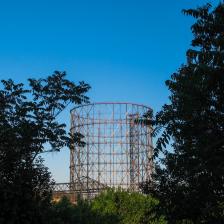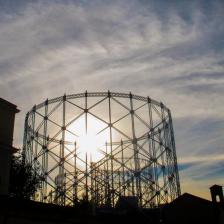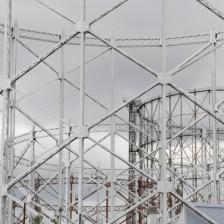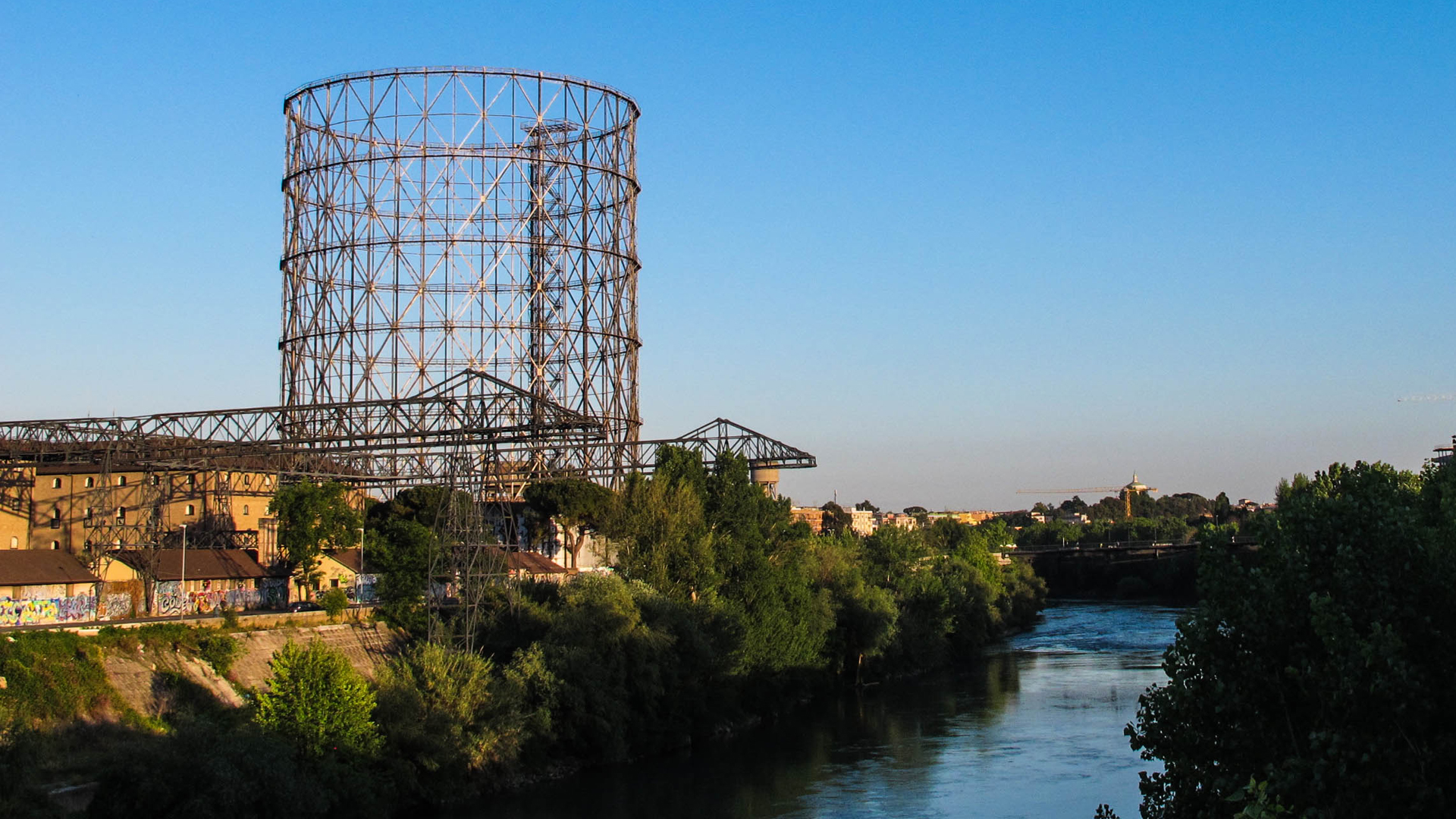
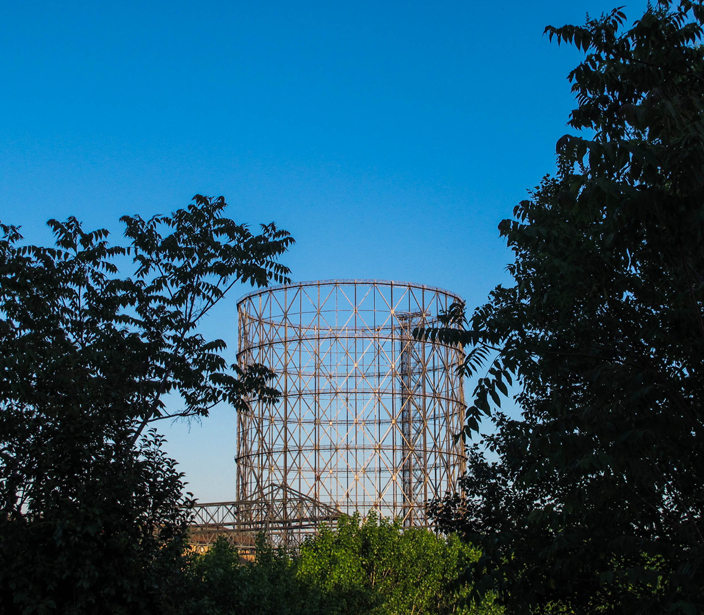
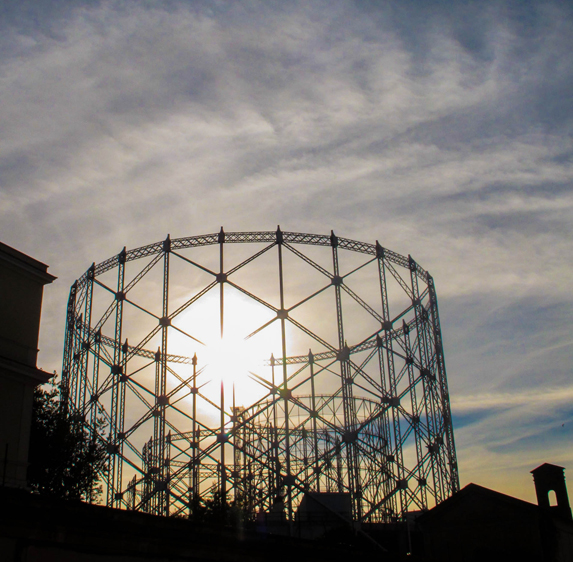
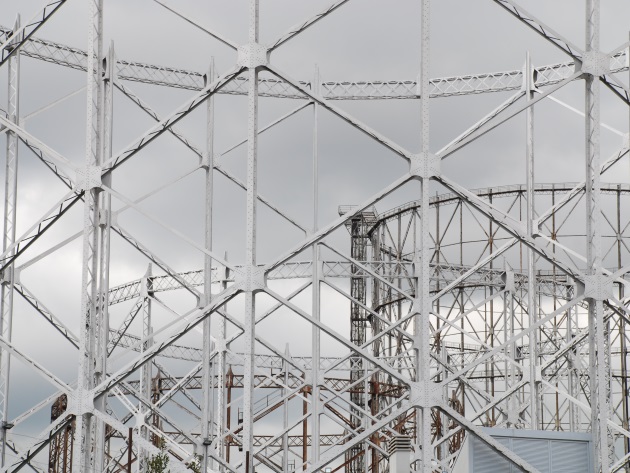
A colossal iron structure that is almost 90 meters in height and with a diameter of 63 meters, nicknamed for its monumentality the “Industrial Colosseum” or “Modern Colosseum” and used as a film backdrop by Pasolini for his famous Accattone and by Ferzan Özpetek for The Ignorant Fairies.
A part of the city’s urban landscape, the Gazometro is one of the most striking emblems of Rome’s industrial archaeology. It is located in the Ostiense district, in an area where the first industrial settlements had already begun to spring up at the end of the 19th century, thanks in part to the construction of the Ponte dell’Industria bridge, commissioned by Pius IX to allow the Rome-Civitavecchia railway to cross the Tiber. The real turning point for the district, however, came in the early 20th century, with the Nathan municipal council: the river port with the adjoining general warehouses, the Centrale Montemartini and, indeed, the gas plant (today Italgas) with the gasometer date from these years.
The structure visible today served to store gas, managing its production and consumption, and followed the construction of three “smaller” structures by Samuel Cuttler & Sons of London between 1910 and 1912. Work on the great Gazometro – the most imposing in Europe with a capacity of 200 thousand cubic meters of gas – began in 1935. The Genoese firm Ansaldo, who built it with the German firm Klonne Dortmund, used 3 thousand tons of sheet metal and sections, with 1,551 iron poles that, when put in a row, would reach a total length of 36 kilometers. Referred to as a “telescope”, because it had a huge cylinder inside that inflated and deflated, showing the amount of gas it contained, it finally went into operation on 13 July 1937, immediately arousing interest but also criticism and discussion.
Beginning in the 1960s, with the widespread use of methane, a natural and safer gas, the gasometer was gradually decommissioned but continues to be part of the city skyline.
Information
Eni and Fai have put together a program of free guided tours of the Gazometer.
For more information see www.eni.com/it-IT/media/storie/gazometro-roma.html
or write to segreteria@enigazometroaperto.it
 Condividi
Condividi
Location
To find out about all accessibility services, visit the Rome accessible section.












































